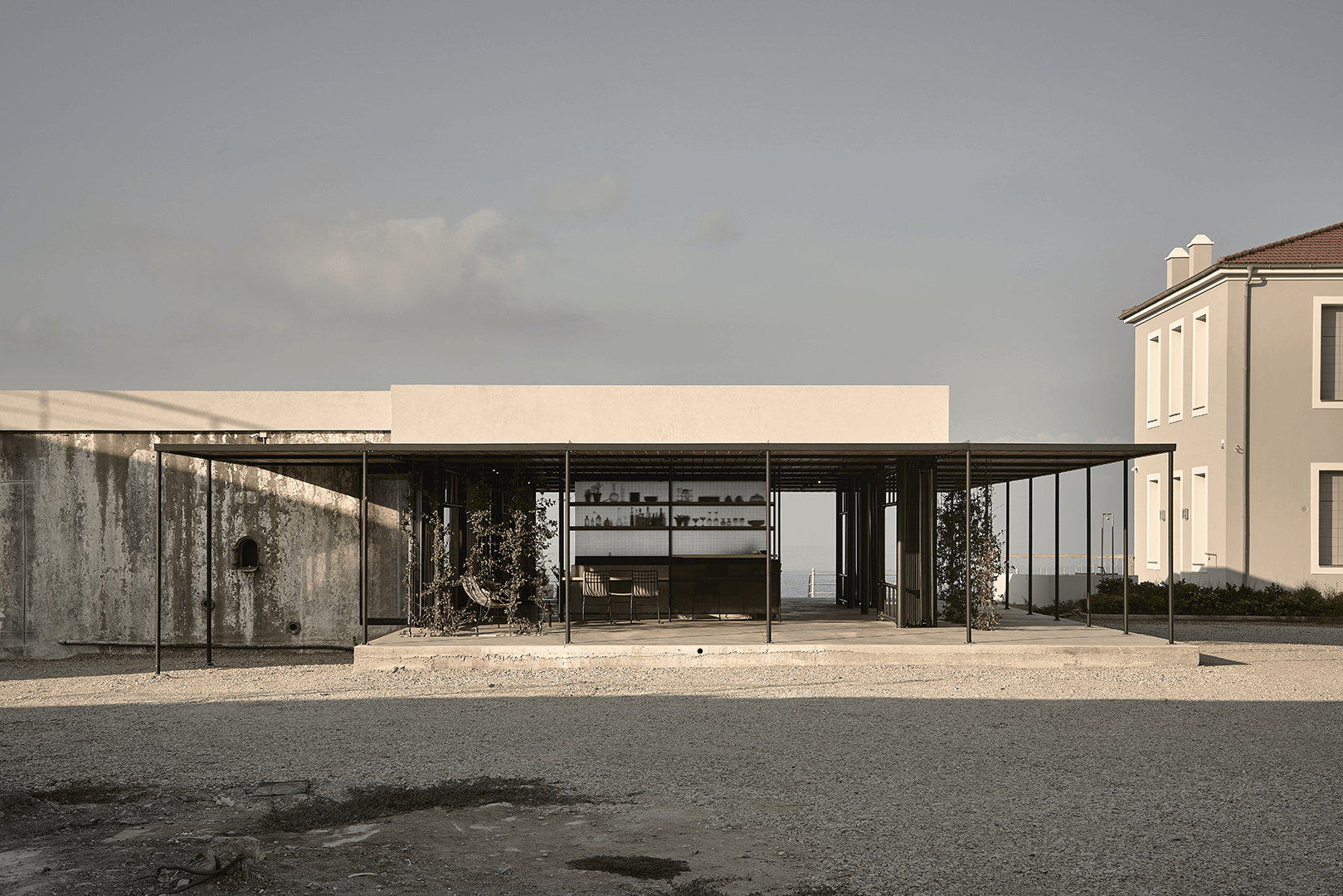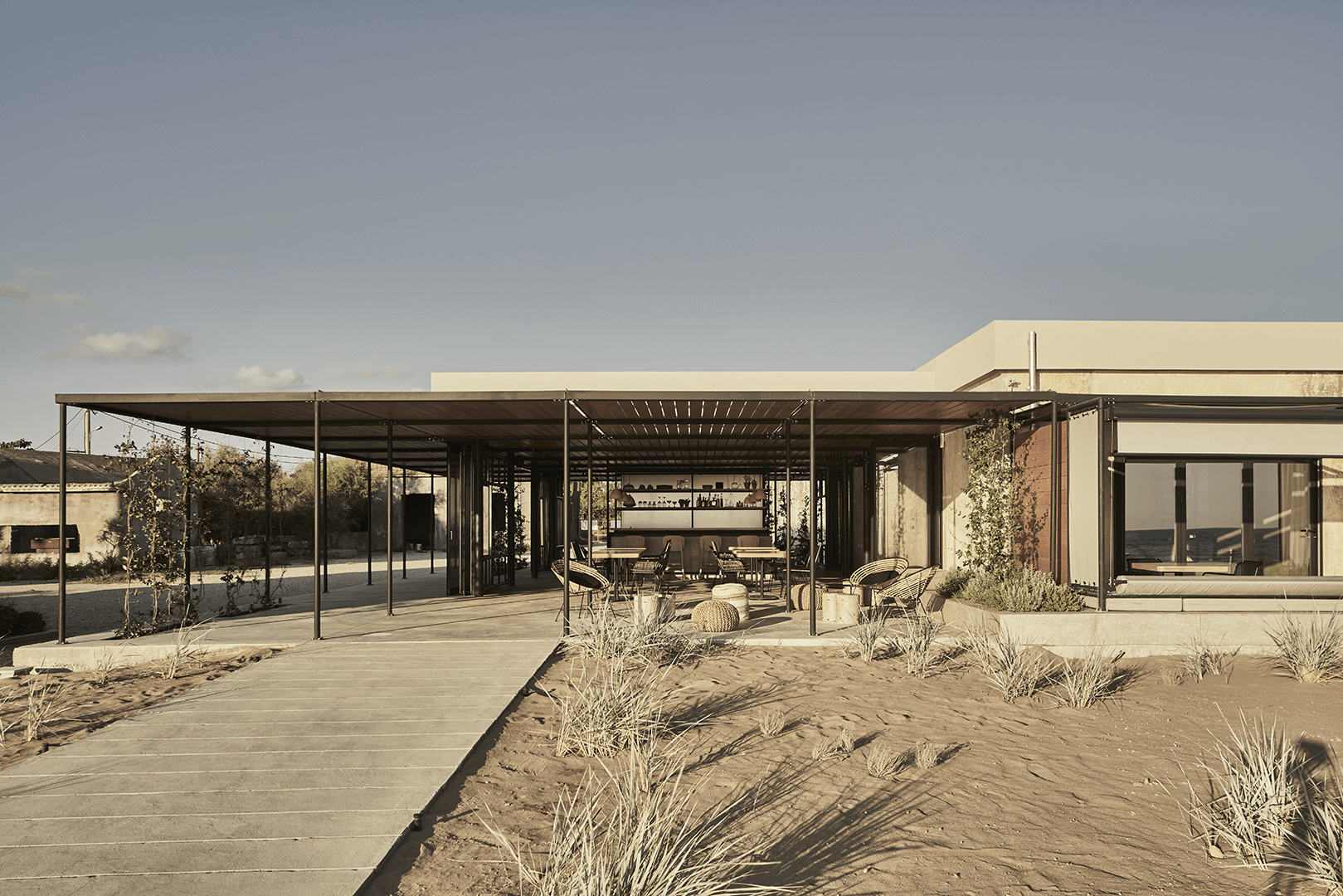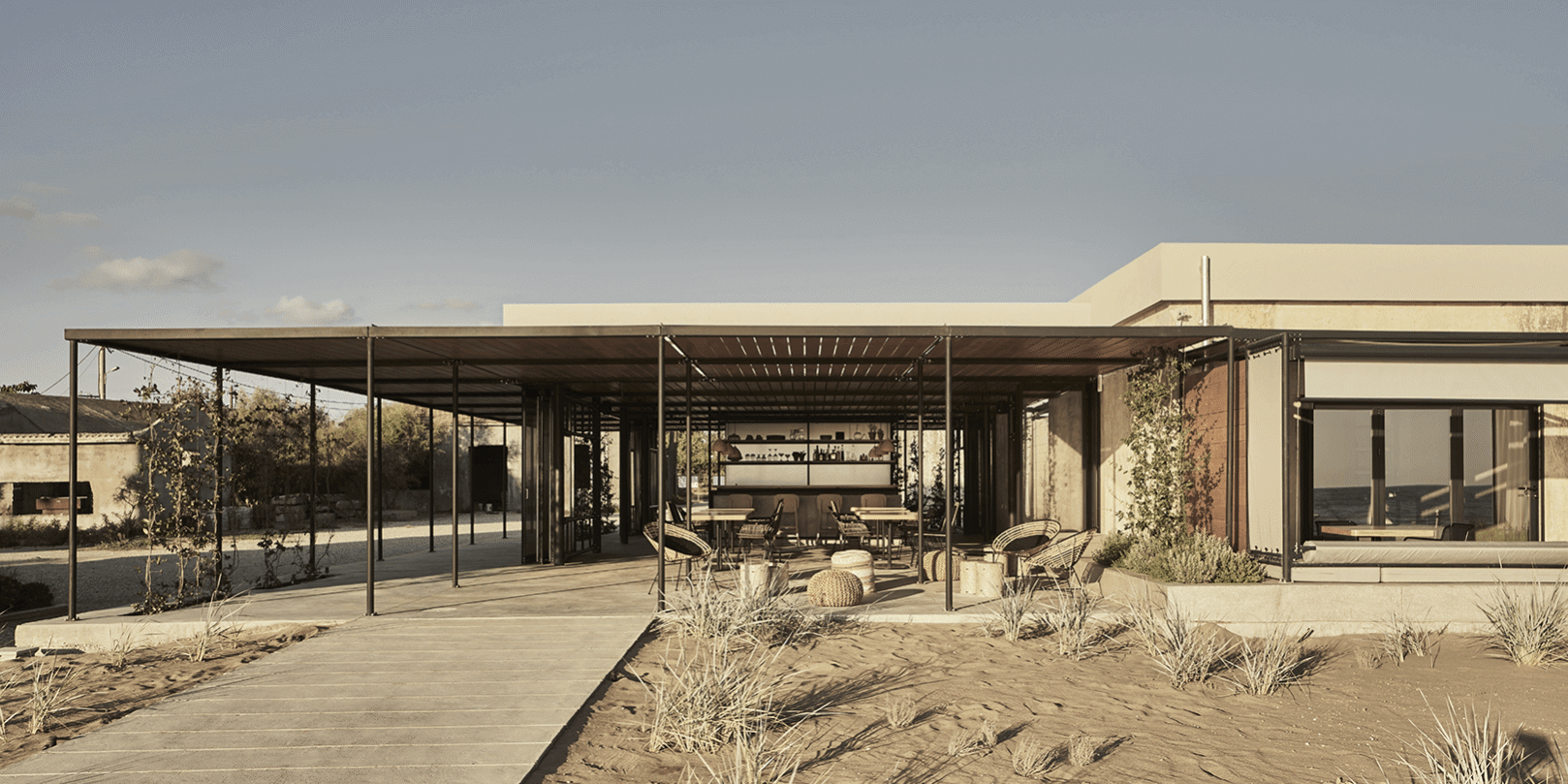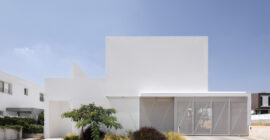Industrial vocabulary
Nikos Karaflos, the visionary entrepreneur-turned-hotelier, first initiated the idea several years ago to transform an abandoned wine factory on the west coast of mainland Greece into a hotel. After an extensive process of design, development, and bureaucratic procedures, his commitment to the project has come to fruition with the completion of Phase 1 and the opening of the Dexamenes Seaside Hotel.
Site History
The history of Dexamenes dates back to the “Era of Currants.” Following the liberation of Greece in 1830, the cultivation of currants grew to remarkable proportions, becoming the main export product of the Greek Kingdom. However, when the “Currants’ Crisis” broke out in 1910, the trade collapsed, creating a need to convert the unsold stock into alternative products such as wine. This led to the establishment of the first wineries and distilleries. Dexamenes was constructed literally on the sea, allowing ships to be loaded directly with wine through pipes that extended as a platform along the beach of Kourouta before setting sail for major overseas markets.
The derelict industrial structures that define the site have remained largely untouched since the 1920s, resting quietly along a pristine stretch of coastline in the western Peloponnese. This naturally unspoiled environment provided an ideal setting for the creation of a hotel.

Design Philosophy
From the outset, it was evident that the powerful history and raw beauty of the existing buildings should not only be preserved but also subtly revealed through a design that would breathe new life into their walls. The approach sought to complement their brutal simplicity with elegant interventions, transforming their austere functionality into spaces of calm, comfort, and relaxation.
This transformation presented the project’s central challenge. After extensive testing of ideas, the design direction became clear: the existing bare aesthetic of the site had to be embraced, and no alien materials or elements were to be introduced. This principle defined a restrained palette of concrete, steel, and engineered glass, with timber incorporated as a reference to the site’s nautical heritage. New construction was conceived to tread lightly, leaving the historic structures largely untouched to preserve their commanding presence. The core of the design lies in the balance between old and new – an industrial vocabulary expressed with elegance and restraint.

Spatial Organization
The site is dominated by two elongated concrete blocks divided lengthwise into two rows of ten storage tanks each. Measuring approximately 5 by 6 meters, these tanks were ideally suited to be converted into hotel rooms, resulting in a linear plan of identical units oriented toward the adjacent beach. Phase 1 of the development involved the transformation of the first row of tanks and the addition of a lightweight structure at one end of the block, all connected by a raised promenade walkway leading directly to the sea.
Entry to the hotel occurs from the rear of the tanks through an elegant canopied pavilion that mediates between land and sea. With the glass partitions opened, guests step onto a concrete slab that serves as the reception area. At night, the glow of the louvered plywood canopy provides a warm welcome, while during the day its shade offers relief from the sun. The surrounding concrete buildings convey the weight of history, while the openness of the new, light-filled structure infuses the space with renewed energy. As one proceeds through the bar and lounge, the sea unfolds in view. The promenade leads toward the private rooms, where each patio frames an intimate view of the sunset over the horizon.
Inside the converted tanks, the contrast between the cool, monastic calm of the interior and the sunlit exterior becomes immediately apparent. Large sliding windows open the space to sea breezes or can remain closed to preserve the coolness without sacrificing the view. Each 30 m² unit is efficiently organized, with exposed concrete walls maintaining their distinctive patina. Every room includes a double bed, a single bed that doubles as a sofa, an open wardrobe and storage area, and a bathroom separated by textured glass that allows daylight to filter through to the rear of the space.

Material Palette
Polished terrazzo surfaces connect the interior to the coarse texture of beach-pebble aggregates revealed in the cut concrete walls. A spacious double shower and separate WC bring a sense of luxurious simplicity to the restrained interior. A continuous steel framework integrates lighting and structural elements, running from the bathroom through the bedroom and extending outward to support the shading screen and canopy of each patio. This framework continues externally, connecting all tanks and wrapping around the end of the block to define the structure of the lounge, bar, and reception areas.
The framework serves as a fine, black underline to the new interventions – an architectural gesture reflecting the delicacy with which hospitality has been introduced into an industrial context. Lightness and warmth are thus brought to the heavy concrete masses, creating spaces of intimate scale and subtle rhythm. The result is an architecture of contrasts: between weight and air, roughness and refinement, history and modernity.
The project has been shortlisted for the European Union Prize of Contemporary Architecture, Mies van der Rohe Award 2022.






